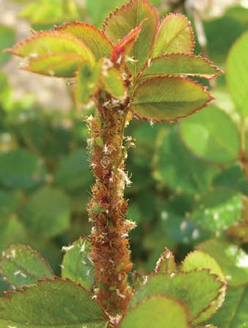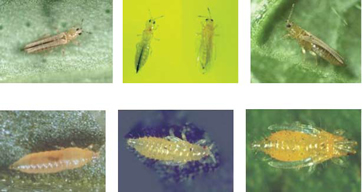 After climbing one great hill, one only realizes that there are many more mountains to climb’. This old adage attributed to one of African greats rings true in thrips management.
After climbing one great hill, one only realizes that there are many more mountains to climb’. This old adage attributed to one of African greats rings true in thrips management.
The recent restrictions of numerous active ingredients especially from organophosphates and neonicotinoids classes by different markets has made management of thrips very difficult as our senior correspondent found out. Growers serving different markets are in a dilemma and a cross check of their stores one will mistake them to a stockist. Some markets will restrict acephates others will accept, some imidacloprid others not, it is the same story with abamactin, thiamethoxam, thiacloprid, carbamates, fipronil, mancozeb etc.
As this is happening Kenya is facing acute water challenge and thrips been hydrophobic are multiping very fast. The past few years has seen the rise and spread of thrips in greenhouse farming, hitherto a minor pest, to become the most destructive insect pests of the greenhouses. Thrips are hitting growers where it hurts most!
Thrips has been, and still is, a difficult insect pest to control or regulate in greenhouse production systems leading many to believe that we have reached an impasse regarding its management. Dealing with thrips, therefore, requires a holistic approach integrating the methods detailed above. Key in this approach is knowledge about the biology of the pest, and indeed all other relevant pests, the crop (s), the cropping systems, pest management options etc. Knowledge, we believe is the best weapon against pests!
What are thrips?
Thrips are minute, slender insects, usually only a few millimetres long with piercing-sucking-mouthparts and the ability to cause direct damage to flowers making it unmarketable for export.
How do thrips feed?
Thrips have piercing-sucking mouthparts. They use a needle-like structure to puncture plant tissue and a second tube-like structure which is placed into the hole through which plantsap is extracted, subsequently causing direct damage to the crop.
What are the Damage symptoms?
In Flowers there are mainly two types of Thrips species that attack Roses, Carnations and other flowers. The western flower thrips (Franklieniela occidentalis) and Thrips tabaci also known as Onion thrip. These thrip species mainly feed on both leaves and flower petals with the majority of their damage to roses occurring throughout the growing period of the flowers. Their feeding may result in distorted buds that open only partially or abort prematurely. Feeding on petals may result in petals streaked with silvery-white or brown as well as petals with browning edges. White and light-colored rose blossoms appear to be particularly attractive to thrips. Young leaves may be distorted and flecked with yellow as a result of thrips feeding.
Are all thrips species damaging to Flower?
Not all species of thrips necessarily cause direct damage to crops. Some species are considered to be predators as they feed on other thrips and other insects such as mites, others are known to help with pollination and some species even feed on fungal spores. Unfortunately, several of these species are also known to be plantfeeders and cause economic damage.
Monitoring
Monitoring is important for early detection of a thrips infestation; determining the numbers of thrips present in the greenhouse; detecting seasonal trends in thrips population over the year; and in assessing the effectiveness of management strategies implemented. Yellow or blue sticky cards are the easiest way to monitor for thrips. Gently tapping the terminal buds and flowers onto a white piece of paper and using a 10x magnifying lens to examine the insects that fall out is an easy way to check for thrips. Be sure to record population levels.
How do we Manage thrips?
Thrips are difficult to control. Always use an integrated program that combines the use of good cultural practices, natural enemies, and the most effective IPM-friendly available.
Start clean
Making sure the young plants are clean is an important part of keeping a crop thrips-free. Transplants should be inspected for thrips before being placed in a greenhouse. Granted, this may be too labour intensive and time consuming especially when large quantities of plant material are involved but sticky card traps placed among the new plants for a day or two will quickly indicate the presence of thrips.
 Exclusion
Exclusion
Staying clean would involve excluding thrips from the greenhouse as well as eliminating sources of thrips infestation. Where feasible, covering the openings to greenhouses is a very effective delivering a reduction of up to 70% in pest problems. Screening to exclude thrips must be very fine. Such screening, known as microscreen, has a maximum hole size of 192μm (0.037mm2). This, however significantly reduces air flow when placed over vents, and growers must modify ventilation systems to compensate for this.
Weeds and plant debris
Weed control is essential for a successful thrips control program. Certain weeds, particularly those in the Composite and Solanaceae families, and those with yellow flowers, attract thrips adults serving as refuge both for thrips and tospoviruses. As such weeds must be removed from both inside and around the greenhouse. It is also essential to immediately remove plant debris and bloomers from the greenhouse or placed into containers with tight-sealing lids, and not in the open as is common practice in most farms. Thrips adults will abandon desiccating plant material for the main crop.
Biological control
Biological control of thrips relies on the use of natural enemies including predatory mites and pirate bugs, entomopathogenic (or insect-killing) fungi, and entomopathogenic nematodes.
Predatory mites: Like thrips, they prefer small niches where contact between predator and prey is maximized. Some predators feed on pollen when thrips populations are low and must be introduced before a thrips population has built up to damaging levels. The mites establish themselves on leaves, usually on the undersides, and are most effective in attacking 1st instar thrips nymph. They use their mouthparts to pierce the thrips and suck out the cellular fluids.
Other predators regulate thrips populations by feeding on the 1st and 2nd instar nymphs. They should be applied on tender shoots and applied frequently based on pest pressure. We also have another predatory mite, which resides either in the soil or growing medium feeding on the pupal stage and should be applied on moist soil/medium. Lastly the predaceous mites establish themselves on a crop, mate and reproduce in the greenhouse. These mites are susceptible to many insecticide sprays.
Pathogens: Several pathogens have been investigated for control of thrips. A number have shown to be very effective in managing thrips populations in cut flowers where relative humidity is high. They are capable of infecting both adult and juvenile thrips. Frequent usage will ensure the fungus is present on most crop foliage affecting juvenile and adult thrips.
We also have another fungus which is effective in infecting the soil-dwelling prepupal and pupal stages and also kills sciarid flies larvae in the soil. The key to implementing a successful biocontrol programme is to release biocontrol agents early enough in the cropping cycle. It is important to note that natural enemies will not regulate an already established or existing high thrips population because it takes time from release before natural enemies will lower thrips populations below damaging levels. Moreover, natural enemies will not eradicate (neither will insecticides) thrips.
Chemical control.
Chemical insecticides play an integral role in thrips management programs, more so because the tolerance of thrips damage on greenhouse-grown ornamental crops is very low. Insecticides with contact or translaminar activity are generally used to control thrips, because systemic insecticides typically do not move into flower parts (petals and sepals) where thrips normally feed.
High volume sprays are typically required to reach thrips that are located in hidden areas of plants such as flower buds. Most available insecticides have no activity on eggs and pupae. Repeat frequent applications are therefore warranted to kill the life stages that were not affected by previous application. However, frequent applications may lead to the development of insecticide resistance, another elephant in the room of thrips management, and possible plant injury (phytotoxicity).
Conclusion
The only solution is continual management whether hot or cold, dry or raining, thrips will always need to be managed only reduction of spray intervals can be encouraged.


